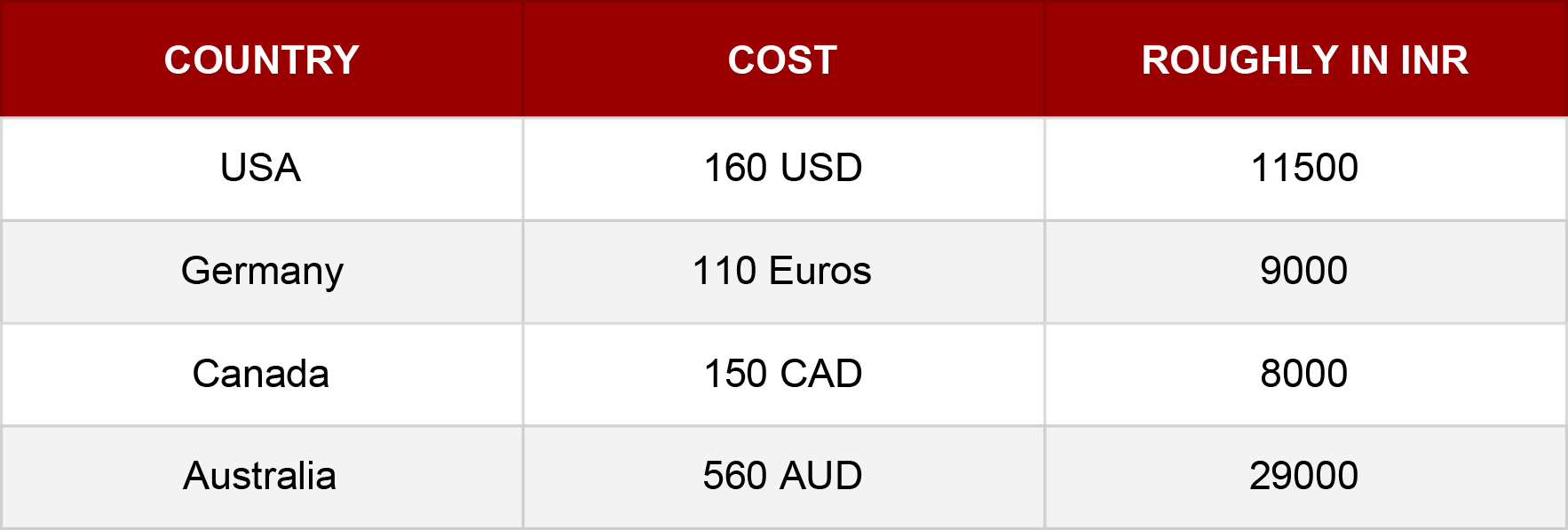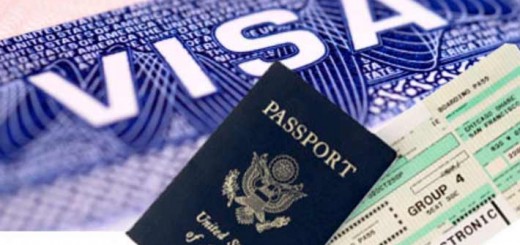Student Visa Requirements, Fee, Eligibility, Application Process
If you are reading this article, you have probably received your admit from a few universities. Awesome! But now begins the uphill task of getting your student visa, which involves some very important paperwork and interviews. This blog post will give you a solid introduction into that aspect of your study-abroad journey!
What Is a Student Visa?
A student visa is the official green signal for a student to enter the country. In most cases, the student is required to have received an admit into a full-time course in a University of the country to start the visa application process.
After your course is completed, different countries have a set time period for which you can stay on in the country, following which your visa expires. This extended period can be 60 days or 4 months depending on the country.
The Australian Student visa process is completely online. For USA and Germany, the interviews will be held at the US Embassy and the German Consulate respectively. With regard to Canada, students receive their Student Permit only after arriving in Canada. But to do that, they have to first apply for a Temporary Resident Visa. This is provided by the Canadian High Commission and facilitated by the Visa Application Centers.
Types of student visas:
United States:
Most students apply for the F visa. The F visa is for students enrolled in full-time programs. The M visa is issued to students who choose to pursue a non-academic or technical course. Students of community colleges are also issued the M visa. The J Visa is applicable for students visiting the US on Exchange Programs and Research Fellowships.
Germany:
Three types of student visas are issued. The most commonly issued one is the German Student Visa for students who have received an admit to full-time programs in German universities. The German Student Application Visa applies to students whose presence is required in Germany during the application process selection interviews, for instance. Please note that the student will have to apply for a fresh visa after he/she receives admit. The German Language Course Visa is issued to students who have enrolled in a non-academic course to learn the German language and is usually valid for 3– 12 months.
Canada:
There is only one kind of student visa, known as Student Permit, for which, like in other countries, an admit to an academic institute is a must.
Australia:
There is only one kind of visa for full-time graduate programs – the Student Visa (Subclass 500). This change was made in 2016, before which there were more specific categories depending on the nature and duration of your course.
When is the best time to apply for a visa?
Irrespective of which country you are applying for, a Student Visa can be sought only after you have received at least one Letter of Admission from a university. Ideally, try to start filing for the visa application three months before the commencement of your course. The processing time for international students are longer, so the earlier you start the process, the higher your chances of acceptance.
How long does it take to get a student visa?
The visa filing process for F1 visa of the United States takes about two weeks. Most students will know the status of their visa application as soon as the visa interview is over. However, in some cases, the officer in-charge may keep the status as pending to look into some unmet requirements in the visa application.
It takes about 3–4 weeks to get a student visa in Germany and Canada. However, it is advised to start the visa process about three months before the commencement of the course. There is a visa interview as well for Germany, in contrast to Canada, where the process is mostly online.
The Australian Visa process is known to be slightly more stringent with the required documents when compared to other countries. However, if all the documents required have been submitted and found acceptable, the visa is issued in 2–3 days. Sometimes it stretches to two or three weeks.
What are the documents required to start the visa application process?
- Admit Letter from a University
- Valid Passport – should ideally be issued at least 1 year prior to visa application
- Form I- 20 document in case of USA
- Education Qualification Certificates
- Scorecards of GRE, TOEFL, IELTS, GMAT
- Financial documents which prove that your tuition fee and living expenses for the whole duration of the course (preferably) are covered. This can be in the form of a loan sanction letter or proof of financial savings.
- Medical check-up results in case of Australia and Canada
- Health Insurance Certificate (for Germany and Australia)
- Certificate of German Language Proficiency (important for German visa)
- Visa Application fee receipt
Visa application process for various countries
United States:
Once you have received an admit from a university, you will be required to pay SEVIS I-901 fee, following which you will receive your Form I-20. The I-20 is issued by the university and it exhaustively covers every detail of your estimated expenditure. The tuition fee and living expenses for one year are mentioned in detail. The Form I-20 is also an official confirmation of your seat in the university. Once you receive your I-20, you can complete filing your visa application form online and submit it to the consulate after paying a non-refundable visa application fee.
The next step in the process would be to visit your preferred Visa Application Center (VAC) to have your fingerprints and photo taken. You will then be required to choose the slot for the visa interview and your preferred location.
Germany:
For a full-time course which is longer than three months, students will have to apply for a Residence Permit. After the paperwork and online filing process is completed, schedule an interview at the German Consulate. The sooner you do this, the better. Start the visa application process ideally three months before your course commences. An important thing to keep in mind is, for Germany, students will have to create a separate “blocked account,” wherein the living expenses for one year is transferred to that account. This is a mandatory requirement. While this blocked account can be created in any bank, the Consulate refers to Kotak Mahindra Bank’s standard procedures that meets every criteria of the visa requirement.
Canada:
For the Canadian Visa Application process, three documents are mandatory. First, proof of sound health through a valid medical checkup. Second, proof that the fee for your course has been paid. Third, the Guaranteed Investment Certificate (GIC) which requires the student to deposit a sum of ten thousand Canadian Dollars to a bank account in Canada. This amount is meant to cover your living expenses and is proof to the authorities that you will be able to support yourself financially as a student. This is basically to ensure that you have enough funds to finance your living expenditure. If you have these three documents, you can apply for a Canadian visa through the Student Direct Stream (SDS), which is a new mode of visa filing, especially for students from India, China, Vietnam, and Philippines. Once you have submitted your application, you will be required to also submit your fingerprint and photo. If your application has been accepted, you will receive a Letter of Introduction and your Temporary Resident Visa from the Canadian High Commission. You will need to produce these documents when you arrive in Canada, then you will receive your Study Permit. The process takes about four to five weeks.
Australia:
For an Australian Student Visa, all visa applications must be submitted online through the Immi Account, according to the latest regulations. The visa application process will not be successfully submitted until you submit your financial documents to show that the first semester fee has been paid and you have funds, roughly amounting to Rs. 10 Lacs to prove that your living expenses for the first year are taken care of. This could be through a loan letter from a bank, or liquid funds in a bank account. A medical report from a designated center is also a must. When you submit your application form, it is ideal to submit all the supporting documents as well. If some of the supporting documents are in the native language, please attach a certified translation as well. The visa authorities then review your documents and either get back to you with further queries or accept the application, if everything is clear. You will be able to track the status of your visa application online.
How much does the Visa Application Process cost?
We hope this article gave you a good idea of the visa filing application process for the leading countries in international education! We wish you a sound head start in your study abroad journey! If you have any further queries, please drop them in the comments below and we will be happy to help! In conclusion, while many often expect a decline in the F1 visa applicants, data shows that the USA is still the preferred destination for international students, with an average of six hundred thousand students being accepted each year. Canada’s population of international students has also steadily increased in recent years because of the relatively easy way to become a Permanent Resident. Australia recorded an entry of half a million students last year, while Germany accepted four hundred thousand students. Nevertheless, in spite of all the confusion and controversy, USA is the hot favorite!









